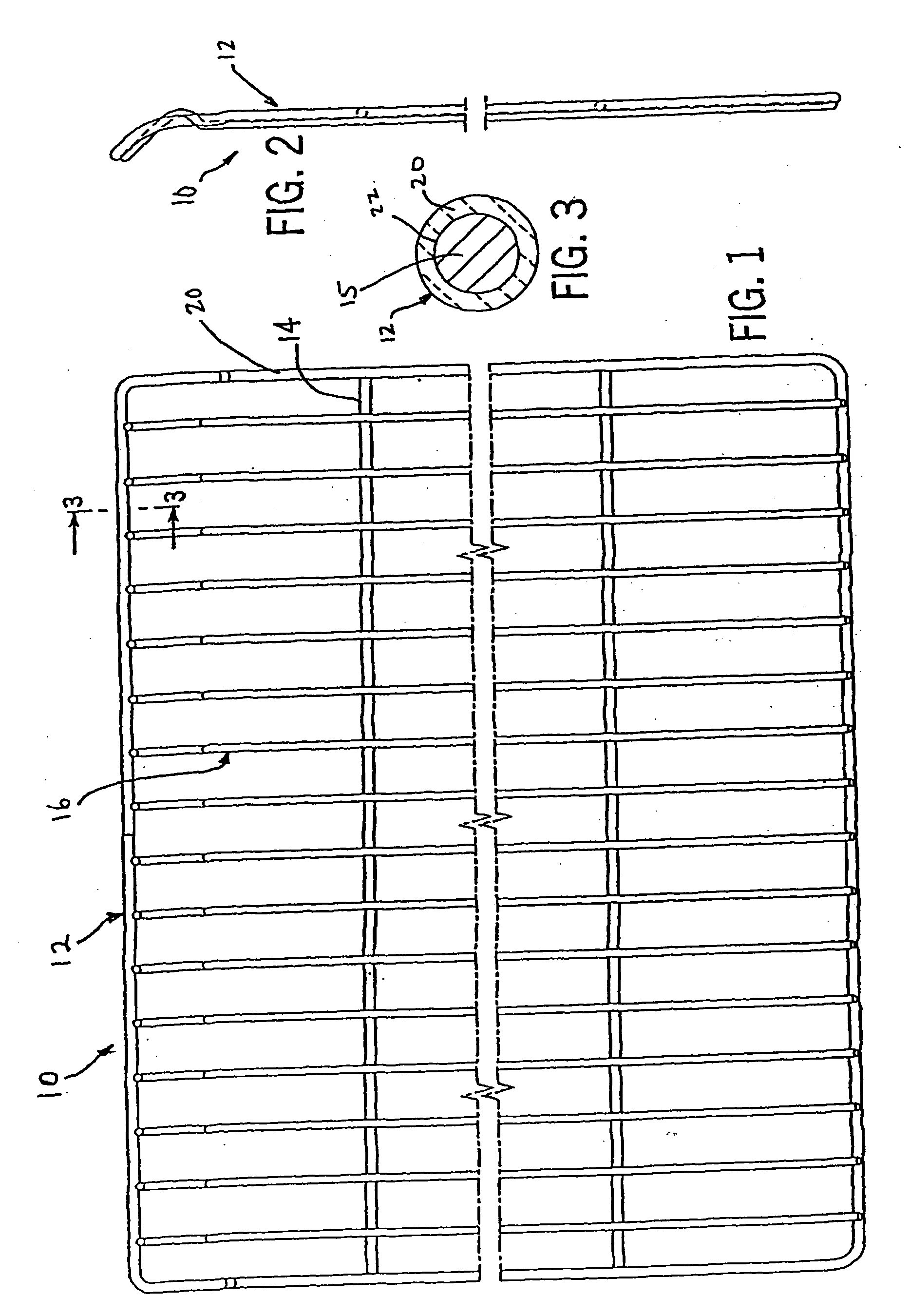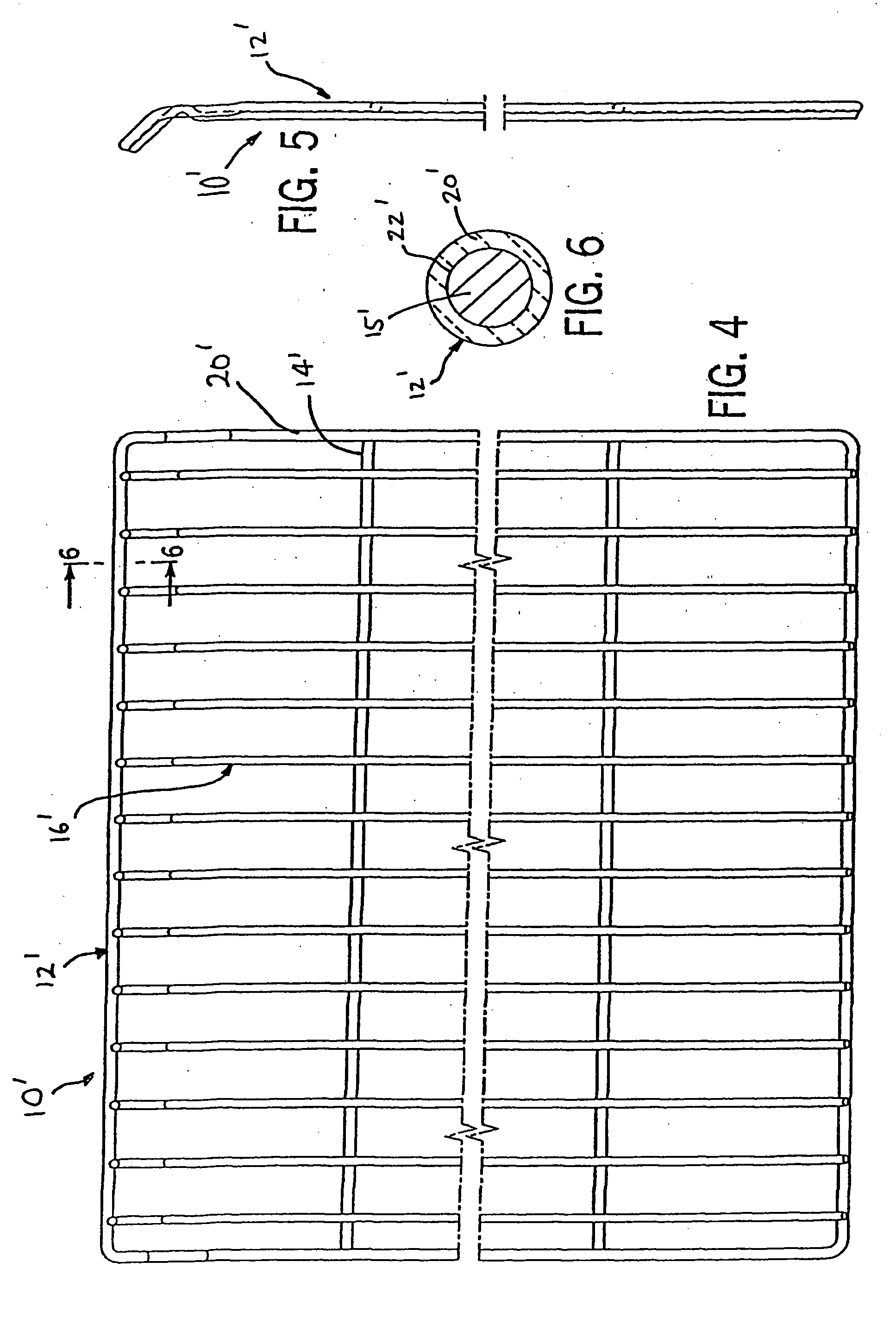Oven rack having an integral lubricious, dry porcelain surface
a technology of porcelain surface and lubricating layer, which is applied in the field of oven racks, can solve the problems of porcelain deterioration, unwanted abrasion, and other problems, and achieve the effects of preventing glass material chipping, reducing the diameter of steel rod material, and reducing the cross-sectional area of steel rod material
- Summary
- Abstract
- Description
- Claims
- Application Information
AI Technical Summary
Benefits of technology
Problems solved by technology
Method used
Image
Examples
Embodiment Construction
[0025] A lubricious surface on the oven rack porcelain coating can be achieved either by mixing a dry lubricant refractory powder homogeneously into the porcelain composition and then applying the porcelain composition to the steel oven rack; or the porcelain coating can be applied to the steel oven rack and sintered followed by coating the sintered porcelain with a lubricious, temperature-resistive coating composition. When a dry lubricant surface layer is applied over a sintered porcelain coating, the dry lubricant active material may form a portion of the uppermost coating layer of the porcelain material, dispersed homogeneously in additional fine powdered refractory materials or, the dry lubricant active material may be discontinuously or continuously embedded into the surface of the porcelain coating material as disclosed in U.S. published application 2006 / 0089270 A1, hereby incorporated by reference.
[0026] In accordance with a preferred embodiment, the lubricious porcelain ma...
PUM
| Property | Measurement | Unit |
|---|---|---|
| temperature | aaaaa | aaaaa |
| temperature | aaaaa | aaaaa |
| thickness | aaaaa | aaaaa |
Abstract
Description
Claims
Application Information
 Login to View More
Login to View More - R&D
- Intellectual Property
- Life Sciences
- Materials
- Tech Scout
- Unparalleled Data Quality
- Higher Quality Content
- 60% Fewer Hallucinations
Browse by: Latest US Patents, China's latest patents, Technical Efficacy Thesaurus, Application Domain, Technology Topic, Popular Technical Reports.
© 2025 PatSnap. All rights reserved.Legal|Privacy policy|Modern Slavery Act Transparency Statement|Sitemap|About US| Contact US: help@patsnap.com



